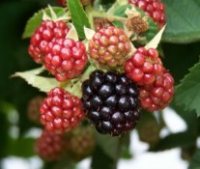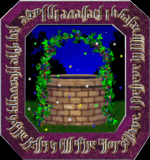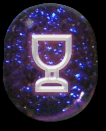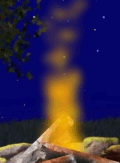Blackberry
Blackberry is the well-known fruit of the Common Bramble (Rubus fructicosus), which grows in every English hedgerow, and which belongs to the Rose order of plants. It has long been esteemed for its bark and leaves as a capital astringent, these containing much tannin; also for its fruit, which is supplied with malic and citric acids, pectin, and albumen.
Added Jun 12, 2010
| 9,477 Reads
Blackberry is the well-known fruit of the Common Bramble (Rubus fructicosus), which grows in every English hedgerow, and which belongs to the Rose order of plants. It has long been esteemed for its bark and leaves as a capital astringent, these containing much tannin; also for its fruit, which is supplied with malic and citric acids, pectin, and albumen. Blackberries go often by the name of "bumblekites," from "bumble," the cry of the bittern, and kyte, a Scotch word for belly; the name bumblekite being applied, says Dr. Prior, "from the rumbling and bumbling caused in the bellies of children who eat the fruit too greedily." "Rubus" is from the Latin ruber, red. The blackberry has likewise acquired the name of scaldberry, from producing, as some say, the eruption known as scaldhead in children who eat the fruit to excess; or, as others suppose, from the curative effects of the leaves and berries in this malady of the scalp; or, again, from the remedial effects of the leaves when applied externally to scalds. It has been said that the young shoots of the common bramble, eaten as a salad, will fasten loose teeth. If the leaves are gathered in the Spring and dried, then, when required, a handful of them may be infused in a pint of boiling water, and the infusion, when cool, may be taken, a teacupful at a time, to stay diarrhoea, and for some bleedings. Similarly, if an ounce of the bruised root is boiled in three half-pints of water, down to a pint, a teacupful of this may be given every three or four hours. The decoction is also useful against whooping-cough in its spasmodic stage. The bark contains tannin; and if an ounce of the same be boiled in a pint and a half of water, or of milk, down to a pint, half a teacupful of the decoction may be given every hour or two for staying relaxed bowels. Likewise the Blackberry fruit, if desiccated in a moderately hot oven, and afterwards reduced to powder (which should be kept ill a well corked bottle) will prove an efficacious remedy for dysentery. Gerard says: "Bramble leaves heal the eyes that hang out, and stay the haemorrhoides [piles] if they can be laid thereunto." The London Pharmacopoeia (1696) declared the ripe berries of the bramble to be a great cordial, and to contain a notable restorative spirit. In Cruso's Treasury of Easy Medicines (1771), it is directed for old inveterate ulcers: "Take a decoction of blackberry leaves made in wine, and foment the ulcers with this whilst hot each night and morning, which will heal them, however difficult to be cured." The name of the bush is derived from brambel, or brymbyll, signifying prickly; its blossom as well as the fruit, ripe and unripe, in all stages, may be seen on the bush at the same time. With the ancient Greeks Blackberries were a popular remedy for gout. As soon as blackberries are over-ripe, they become quite indigestible. Country folk say in Somersetshire and Sussex: "The devil goes round on Old Michaelmas Day, October 11th, to spite the Saint, and spits on the blackberries, so that they who eat them after that date fall sick, or have trouble before the year is out." Blackberry wine and blackberry jam are taken for sore throats in many rustic homes. Blackberry jelly is useful for dropsy from feeble ineffective circulation. To make "blackberry cordial," the juice should be expressed from the fresh ripe fruit, adding half a pound of white sugar to each quart thereof, together with half an ounce of both nutmeg and cloves; then boil these together for a short time, and add a little brandy to the mixture when cold. In Devonshire the peasantry still think that if anyone is troubled with "blackheads," i.e., small pimples, or boils, he may be cured by creeping from East to West on the hands and knees nine times beneath an arched bramble bush. This is evidently a relic of an old Dryad superstition when the angry deities who inhabited particular trees had to be appeased before the special diseases which they inflicted could be cured. It is worthy of remark that the Bramble forms the subject of the oldest known apologue. When Jonathan upbraided the men of Shechem for their base ingratitude to his father's house, he related to them the parable of the trees choosing a king, by whom the Bramble was finally elected, after the olive, the fig tree, and the vine had excused themselves from accepting this dignity. In the Roxburghe Ballad of "The Children in the Wood," occurs the verse— "Their pretty lips with Blackberries The French name for blackberries is mûres sauvages, also mûres de haie; and in some of our provincial districts they are known as "winterpicks," growing on the Blag. Blackberry wine, which is a trustworthy cordial astringent remedy for looseness of the bowels, may be made thus: Measure your berries, and bruise them, and to every gallon of the fruit add a quart of boiling water. Let the mixture stand for twenty-four hours, occasionally stirring; then strain off the liquid, adding to every gallon a couple of pounds of refined sugar, and keep it in a cask tightly corked till the following October, when it will be ripe and rich. A noted hair-dye is said to be made by boiling the leaves of the bramble in strong lye, which then imparts permanently to the hair a soft, black colour.
Added Jun 12, 2010
| 9,477 Reads
Share The Magic ...
The GoE MONEY!!! Course - A Course In Real MONEY MAGIC!
|





















